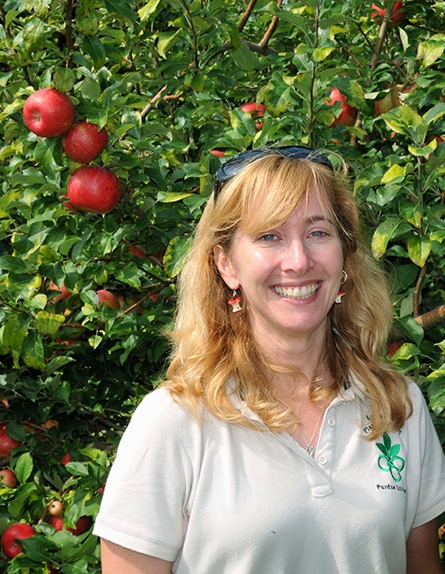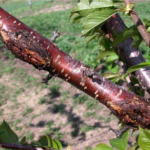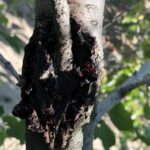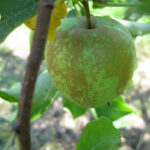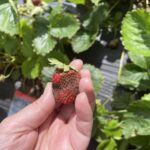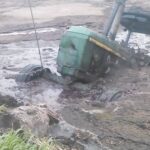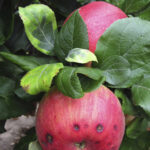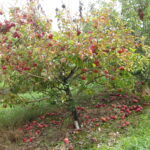As we continue to walk on really expensive eggshells in 2023, it’s important to recognize that fungicide availability along with the effectiveness of available fungicides (and their price) will impact orchard, vineyard and berry patch management 2023. For all growers, the number 1 problem continues to be fungicide resistance in a diversity of fruit crops.[Read More…]
The Tools: Hand lens-10x or 15x -To correctly use a hand lens, place the lens directly in front of your eye and bring the sample you are examining towards the lens until the object comes into focus. Knife – good for cutting into stems or root tissue. Pruning shears- for taking samples – disinfest blades[Read More…]
Another warning for severe brown rot of stone fruits (apricot, cherry, nectarine, peach, plum) (Fig. 1). Warm, wet, humid weather at harvest is particularly favorable for this fungal disease. Also, as fruit softens during the ripening process, it becomes much more susceptible to brown rot. Carefully picking and handling fruit to avoid injuries prevents infection[Read More…]
Crop loss in 2020 and 2021 led many growers to greatly reducing their fungicide applications, or use just captan or mancozeb, which, although effective against scab, are not effective against powdery mildew. Coupled with our unusually dry weather, this has led to a build-up of powdery mildew (PM) inoculum, and continued management issues surrounding this[Read More…]
Wet weather throughout the Midwest has resulted in explosive anthracnose outbreaks in Indiana, Illinois, Kentucky and Ohio. Although it is too late to save the fruit crop, actions can be taken to protect daughter-plant establishment and to develop a plan for future disease management. Anthracnose is one of the most devastating diseases impacting strawberry production[Read More…]
Indiana seems to experience the entirety of US weather, sometimes in the same day. The recent spate of cool, wet weather has left apple scab one happy fungus (Fig. 1). Most of the state just underwent an extreme scab period, and unfortunately, few of us could do anything about it because of the combination of[Read More…]
The only thing predictable about Indiana weather is that it will certainly be unpredictable! The past few weeks of cool weather and intermittent freezes has slowed some things down. Unfortunately, scab isn’t one of those things. Failure to control early season scab infections increases the risk of economic losses. When managing scab, it is important[Read More…]
In Indiana, our ‘normal’ or average weather is one of extremes, punctuated with an occasional glorious summer day of sun and 76 degrees F. This year has been one of flooding and droughts, freezes and scorching heat. Again. With these weather extremes come physiological disorders and summer fruit rots, for those lucky enough to even[Read More…]
Pesticide Product Registration: Draft Human Health and/or Ecological Risk Assessments for Several Pesticides, including chlorothalonil and tebuconazole. https://www.regulations.gov/document/EPA-HQ-OPP-2011-0840-0035 This notice announces the availability of EPA’s draft human health and/or ecological risk assessments for the registration review of chlormequat chloride, chlorothalonil and tebuconazole. Dates Comments must be received on or before July 20, 2021. Addresses Submit[Read More…]
Throughout Indiana orchards, Phytophthora root and crown rot continues to be a major cause of tree death (Fig. 1), and losses in small fruit, as well (Fig. 2). The disease is caused by the several members of the genus Phytophthora, and includes (but is by no means limited to) the following species): P. cactorum, P.[Read More…]
